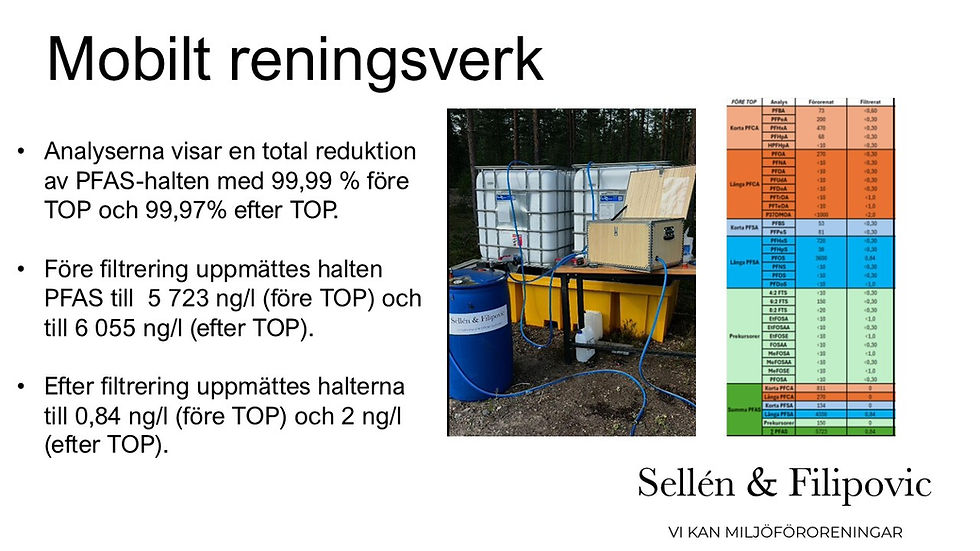What we learn from using mass balance approach and oxidative conversion – A case study on PFAS contaminated soil samples
- Marko Filipovic
- Jul 2
- 2 min read
Sellén & Filipovic gör en favorit i repris! Tillsammans med forskare från Örebro universitet, Eurofins, State Key Laboratory of Marine Pollution and Department of Chemistry har utfört ett omfattande forskning gällande massbalanser av PFAS och TOP-analyser av förorenad jord från Sverige!
Manuskriptet "What we learn from using mass balance approach and oxidative conversion – A case study on PFAS contaminated soil samples" publicerades 9 maj år 2025 i tidskriften Environmental Pollution! Artikeln är Open acess och går att ladda ner på följande länk.

Abstract hittar ni nedan:
Per- and polyfluoroalkyl substances (PFAS) are a large family of synthetic fluorinated chemicals. Studies using multiple analytical approaches to evaluate PFAS-contaminated soils are still limited, potentially leading to an underestimation of PFAS pollution. This study introduced a stepwise analytical workflow for a comprehensive assessment of organofluorine, integrating total fluorine (TF) determination, extractable organofluorine (EOF) analysis, PFAS target analysis, and PFAS precursor oxidative conversion assay. The workflow was applied to ten field soil samples collected from aqueous film-forming foam (AFFF)-contaminated sites. The sum target PFAS concentration (∑PFAS) ranged from 51.8 to 23200 ng/g dry weight. Perfluorooctanesulfonic acid was the predominant PFAS, accounting for 13 %–82 % (mean value: 53 %) of the ∑PFAS. Target PFAS accounted for 1 %–80 % of the EOF in the soil samples, and the integration of oxidative conversion revealed additional EOF contributions ranging from 0 % to 31 %. However, a considerable proportion (20 %–94 %) of unknown organofluorine still persists after combining targeted PFAS analysis and oxidative conversion, likely due to non-oxidizable PFAS, incomplete conversion of unknown PFAS precursors, and persistence of ultra-short chain PFAS post oxidative conversion. In addition, a significant positive correlation was observed between oxidative conversion and EOF results, but not with PFAS target analysis, suggesting that oxidative conversion may better represent the organofluorine burden in AFFF-impacted soils. Our findings indicate that TF analysis is unsuitable for tracing PFAS contamination in soils. Instead, combining oxidative conversion with routine PFAS target analysis is recommended to comprehensively assess PFAS contamination in soils.

"Sellén & Filipovic arbetar med PFAS undersökningar som har hög forskningsinriktning. Detta möjliggör att vi får ny kunskap till oss som vi kan erbjuda till våra kunder. Det innefattar bland annat helt nya metoder och tankesätt som är unika för oss"- Marko Filipovic VD Sellén & Filipovic
Är ni intresserade av våra undersökningar.
Kontakta Marko Filipovic.



Comments